Watch: Kelly Slater On A 5-Fin Board, Then Read Greg Webber Explain It
“That’s the width I rode as a kid!” – Kelly Slater
During lockdown Kelly Slater has been holed up in his Gold Coast apartment. Between going live on Instagram with musicians and sharing his own novel songs, Kelly has been perusing the many spots the Gold Coast has to offer. His undeniable form witnessed at the backend of last year has carried through into 2020, and once again, the board Kelly was atop has raised a few eyebrows.
Designed as a quad by Greg Webber, but like most boards, there’s the option there for a thruster set-up. Kelly however, has opted to pop in a trailer between the quads, making in essence, a 5-finned board. All the down the line speed of a quad with the drive of a thruster!
Greg has a long relationship with Kelly, so rather than speculate on Kelly’s new stick, we decided to give Greg a yell to get some extra details on the board as well as his relationship with the King.
TLDR: Video of Kelly surfing a new board above. Interview with Greg Webber below.
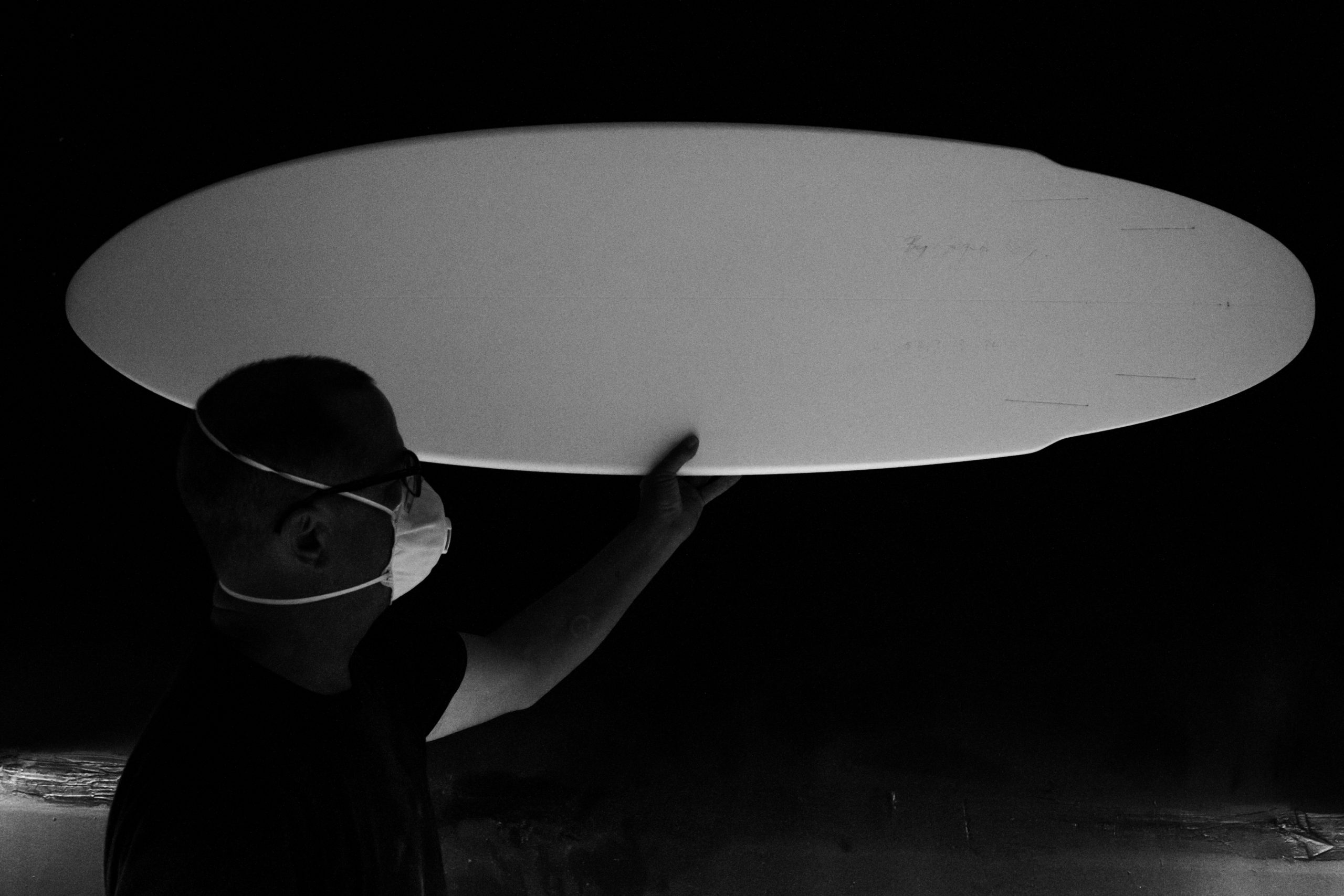
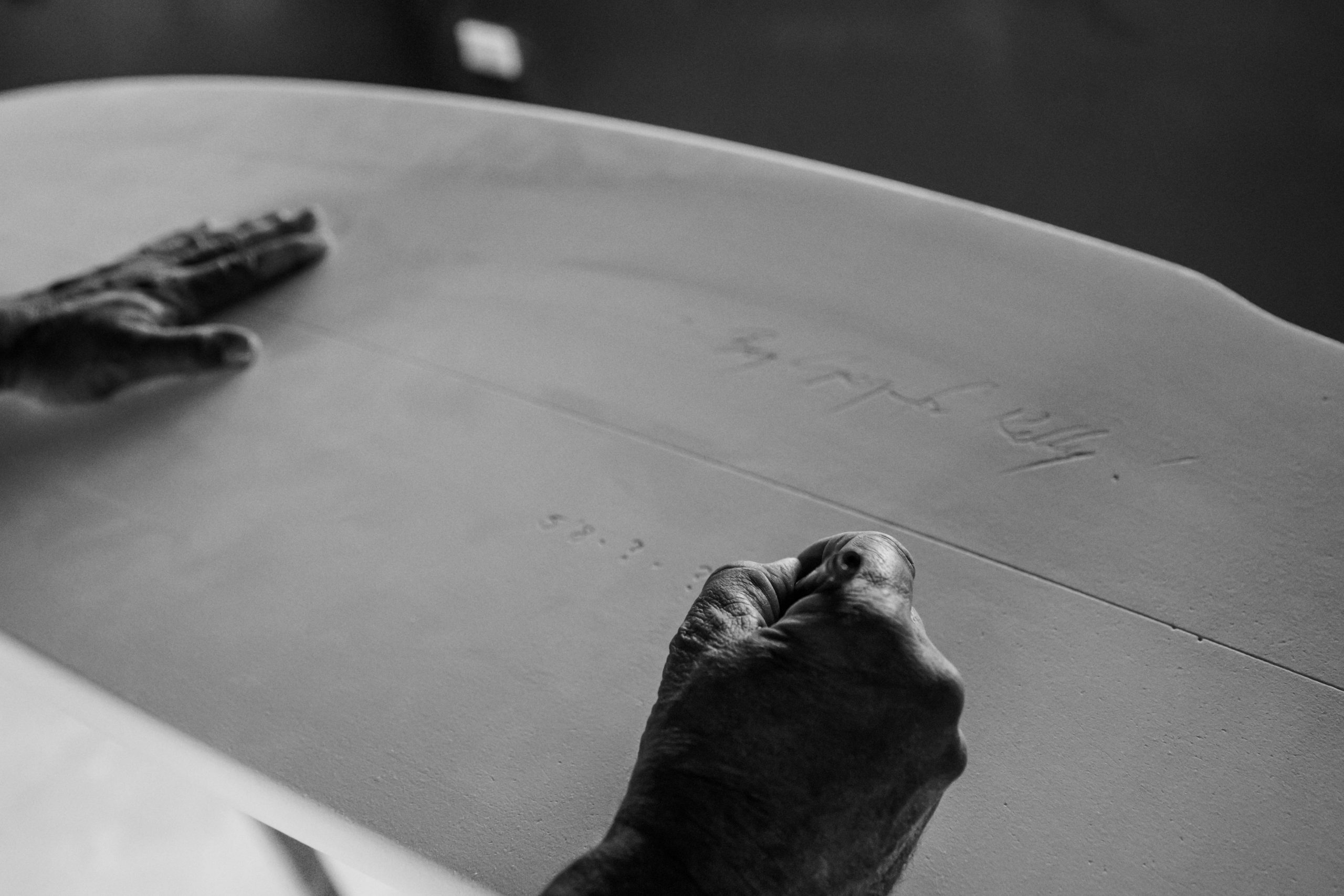
Stab: Where did you and Kelly first come into contact?
Greg Webber: Well we knew each other through the industry, but the first board of mine he rode was a tail concave in the late eighties.
Then at another point I shaped some boards for him for J-Bay. At the time he was riding Simon Anderson’s and a lot of Al Merrick’s too. Then it was about four of five years ago when we started working on the banana shape boards.
Kelly first saw some footage of Herring riding a banana board at Avalon and asked, ‘Is it Herring or the banana?’. I replied, ‘what do you reckon mate? Have a look before and after he’s riding this board.’ After that he wanted to try out some bananas and that’s what he did.
So the banana board is where your relationship with Kelly really accelerated?
Yeah, for sure. He wants to break new ground. He already has a lot of labels and attached to him, so for him he wants to find some new places in surfing. That’s what he was trying to do with the banana.
With the banana though, I think some of the criticism it receives is warranted but a lot isn’t. Here’s my argument.
In people’s minds it’s okay to have a specialised board like a fish with a wide tail that has two keels and no one ever complains that it’s hopeless in bowly six-foot surf; that’s because they know that’s not what it’s designed for. Yet this concept doesn’t apply to the banana which is designed for bowly waves with energy, because people complain that it’s shit out at your average beachbreak.
Anyway, this new board is much easier to ride than a banana [laughs].
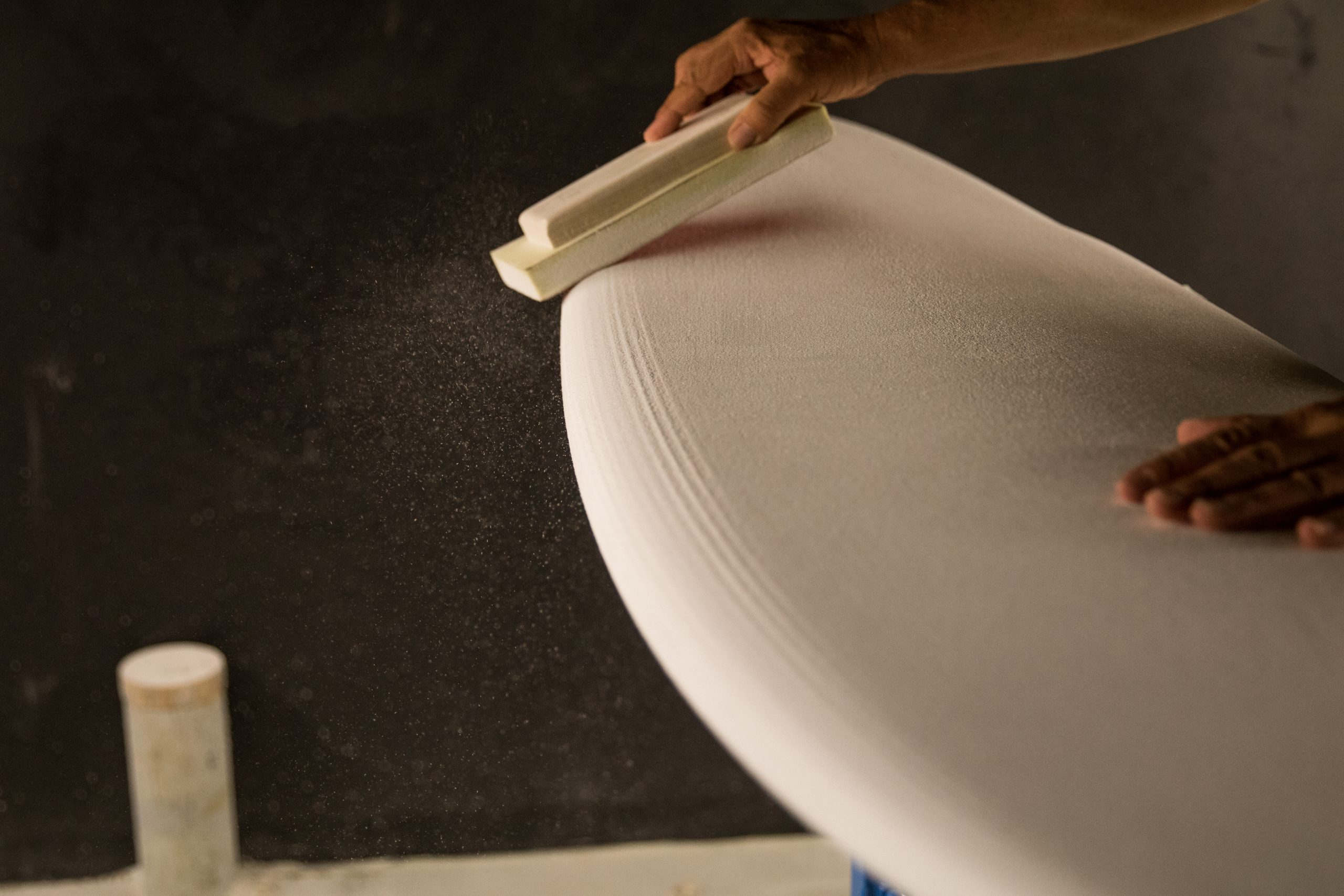
So, this new board has this sort of shovel nose, wings, and all these other parts, so tell us a bit about it. Kelly was flying on it in the footage.
There’s a few different parts to it. For starters, the board is three quarters of an inch narrower than Kelly normally rides. This means the plane shape is really parallel and it allows more rail to enter the water. Essentially, it’s like a snowboard, you’re starting to get the effect from the plane shape and that adds to grip. You have the narrowness which gives you rail-to-rail responsiveness, and once you’re on the rail you have grip.
Another benefit this has it that you don’t have to move your front foot at all. Your front foot is closer to both rails.
This in combination with the concave allows you to go through a roundhouse cutback all the way through rather than having this awkward transition stage between your outside and inside rail.
Obviously any good surfer can do a good roundhouse on most sort of boards, but with this shape you can come wailing into the turn and it’ll do most of the hardwork for you. If you’re riding a board built for airs and off-the-top surfing then you’ll need to nurse it through those roundhouse cutbacks.
The concave is something that’s also important on this board.
Let’s talk about that.
I’ve done a lot of double concaves, but when I did this, because it’s narrow, I made it a single concave. In addition, I also increased the concave of the board, went an eighth of an inch deeper, what that does is give you almost the same rail grip as a double concave but it increases the lift because it’s a single concave. A double concave can’t increase the board’s overall lift because there’s a stringer in the way.
Usually a double concave allows you to have grip when you’re on a rail, but by making the board narrow, and a single concave, you can get both the lift and grip. The lift gives you the speed and the angle of the concave give you the ability to go on rail.
When did you first start working on this design, or come up with it?
I think around a month and a half ago.
I shaped one, sent Kelly and [Adam] Robbo a photo and they both replied saying it was nuts. Then I told Kelly the width, and he said ‘what planet are you?! That’s what I was riding as a kid. The volume in the board though is the same as what Kelly would usually ride, so it’s also thicker than a typical board.
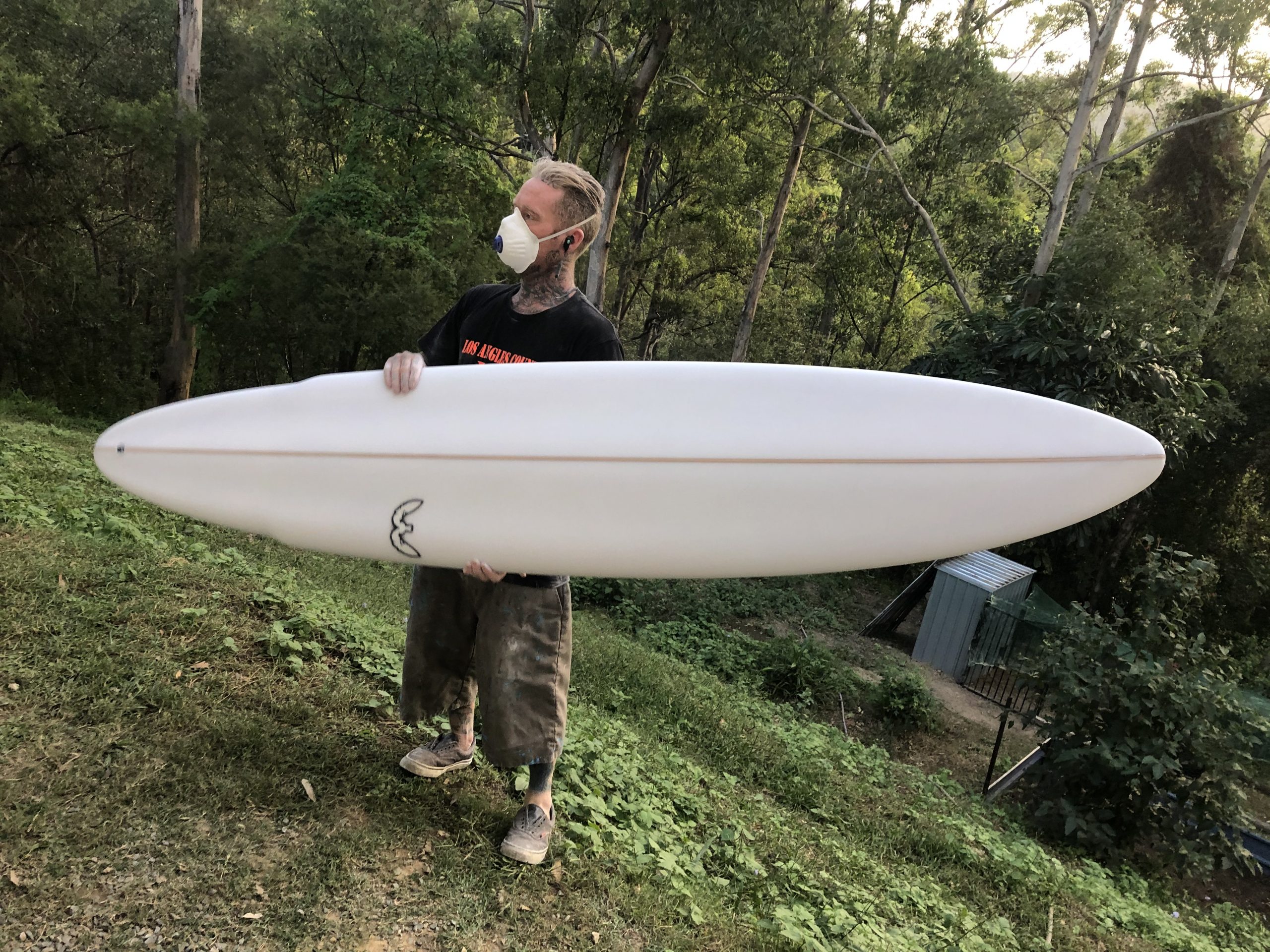
So, what’s the idea with the fins? Was it originally a quad?
Yeah that’s the idea, Kelly is putting his little thing in, he doesn’t need it [laughs]. We’re still working on the design though, he’s on the second one now and we’ve changed the tail rocker between the two versions.
Besides, that small trailer fin wouldn’t have much effect compared to the stinger tail and the placement of the fins. The fins are about an inch further up than most fins, and because of the board’s narrow width they’re also quite close together.
What has Kelly’s feedback been?
On this second one he seems amped. Obviously a lot of the good surfing Kelly does is because he’s one of the best surfers in the world, but we’ve also been able to have conversations and distinguish what that board is doing differently and how it allows him to link multiple turns together.
Like the other day he caught a left and did eight or nine turns linking all of them together. In crappy, small waves a normal board wouldn’t allow you to do this.


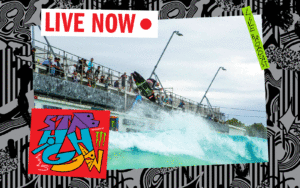
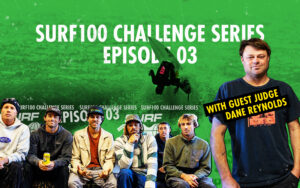









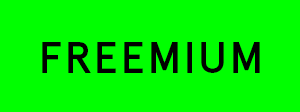
Comments
Comments are a Stab Premium feature. Gotta join to talk shop.
Already a member? Sign In
Want to join? Sign Up